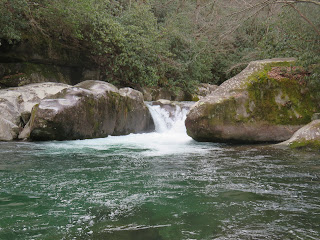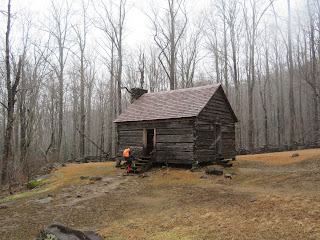The Uwharrie Trailblazers have advocated for better hiking trail signs in the Uwharrie National Forest. A couple years ago, the UTB established a a program to redo all the trail signs along the Uwharrie Trail and for the trail system in the Birkhead Wilderness. Working with the Forest Service, Andy Newcomb, Daniel Alexi and his Boy Scouts, the UTB used mileage complied by Don Childrey in preparation for his hiking guide, Uwharrie Lakes Region Trail Guide, to design, built and install the new signs. The signs for the Uwharrie Trail were made with treated wood, painted Forest Service brown with yellow routed lettering. For the Birkhead Wilderness, natural cedar with routed lettering was used.
We began the setting process for the Birkheads. You may see new signs now at 3 of the Birkhead trailheads. High water and muddy conditions prevented carrying signs and tools to the more remote areas. Because the Birkheads are a wilderness, the Forest Service desires signs only at trailheads and major intersections. Getting lost in the Birkheads will still happen but it will be a bit harder now.
Yes, there is an app for leveling a sign
Don and I let the scouts do the hard work. We didn't even supervise, these guys are well trained and a great group of young men. After the sign setting for the day was done, Don and I decided to explore a bit. Someone had blazed some yellow spray paint on nearby trees, so we following the blazes until they ended, then explored some more. We visited a homesite I visit every year to see daffodils bloom. This one is unique in that it has a pond. Following old roads, we saw another homesite which probably also served as a timbering loading deck. It was a really pretty stretch of woods with easy to follow old roads.



























































